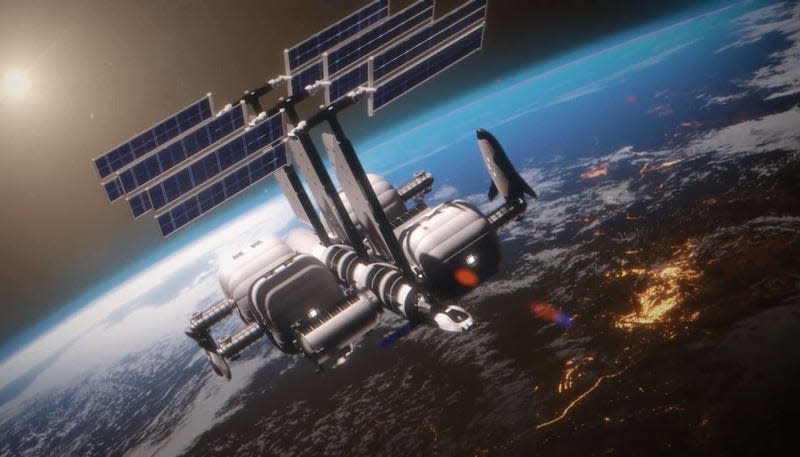Sierra Space Scores Record Funding, Eyes First Commercial Space Station

Artistic conception of the commercial Orbital Reef space station, a collaboration between Sierra Space and Blue Origin.
Sierra Space secured some significant dough during its latest funding round. The company says it will now allocate these funds towards the development of its commercial space station and other orbital tech.
Sierra Space Corporation, a commercial space company that splintered from Sierra Nevada Corporation in 2021, announced on Tuesday that it raised $290 million in its recent Series B funding round. This latest influx brings the company’s total investments to a staggering $1.7 billion across two rounds, setting what Sierra Space describes as an “industry record for combined Series A and B raises,” according to a company press release.
Read more
Dan Harmon publicly addresses his falling out with Justin Roiland for the first time
America Needs A New Canal To Connect The Atlantic And Pacific
R.I.P. David McCallum, NCIS and The Man From U.N.C.L.E. actor
Dream Chaser is an in-development spaceplane for missions to low Earth orbit, transporting crew and cargo to destinations like the International Space Station (ISS). Capable of carrying up to 12,000 pounds (5,443 kilograms) of cargo, the spaceplane requires ULA’s yet-to-fly Vulcan Centaur rocket for launches and will be capable of performing atmospheric reentry and runway landings, reminiscent of NASA’s Space Shuttle. Dream Chaser will come in three variants, catering to cargo transport, crewed missions, and national security space requirements.
The company is targeting early 2024 for Dream Chaser’s inaugural flight from Kennedy Space Center in Florida, under a supply mission contract with NASA to the ISS; the company is currently booked for several resupply missions to the orbital lab, which is set to retire in 2029. Sierra Space’s plans don’t stop at cargo, however; the company’s vision includes launches of crewed Dream Chaser missions to its proprietary space station, Orbital Reef—a project co-developed with Jeff Bezos’ Blue Origin. Crewed treks to space aboard Dream Chaser aren’t expected until the back half of the 2020s.
Sierra Space’s presence in Japan appears to be gaining momentum. The company is exploring Oita Airport as a potential landing site for Dream Chaser, in partnership with Oita Prefecture, Kanematsu, and Japan Airlines. Additionally, a growing collaboration with Mitsubishi Heavy Industries aims to develop a range of technologies for orbit and on-orbit operations.
The recent investment surge in Sierra Space comes amid adjustments in the space capital markets, following the 2021 SPAC frenzy. With $3.4 billion in active contracts and a clear vision for the future, Sierra Space seems well-positioned to achieve its lofty goals in the evolving and tumultuous space industry.
For more spaceflight in your life, follow us on X (formerly Twitter) and bookmark Gizmodo’s dedicated Spaceflight page.
More from Gizmodo
‘All Of Sony Systems’ Allegedly Hacked By New Ransomware Group [UPDATE]
Buyer Paying $840 A Month For Dodge Charger A Year After Declaring Personal Bankruptcy
Sign up for Gizmodo's Newsletter. For the latest news, Facebook, Twitter and Instagram.

